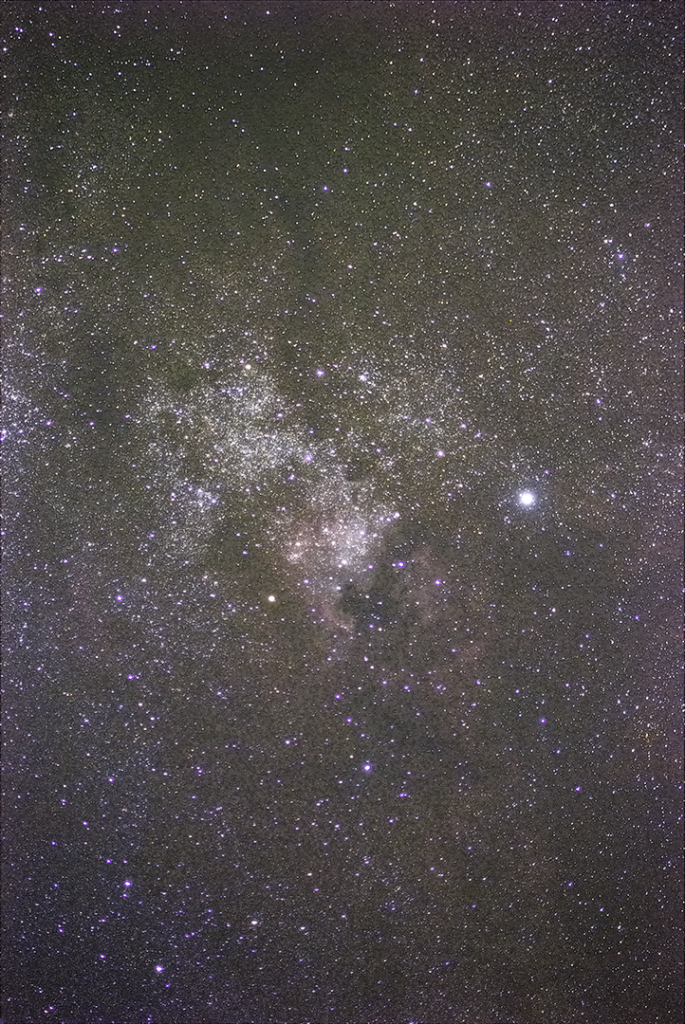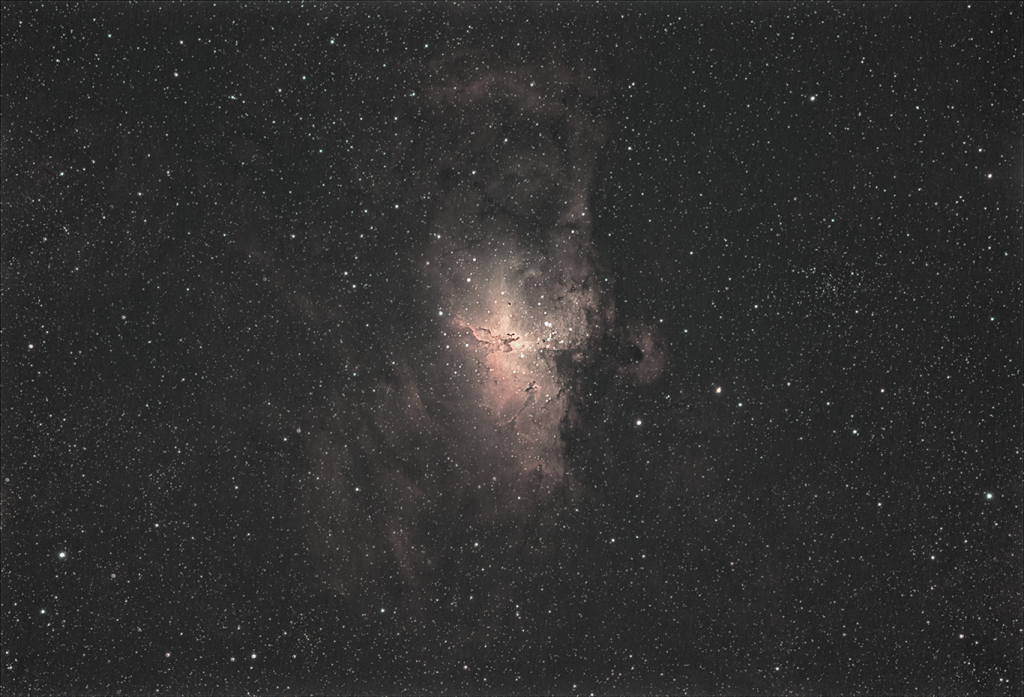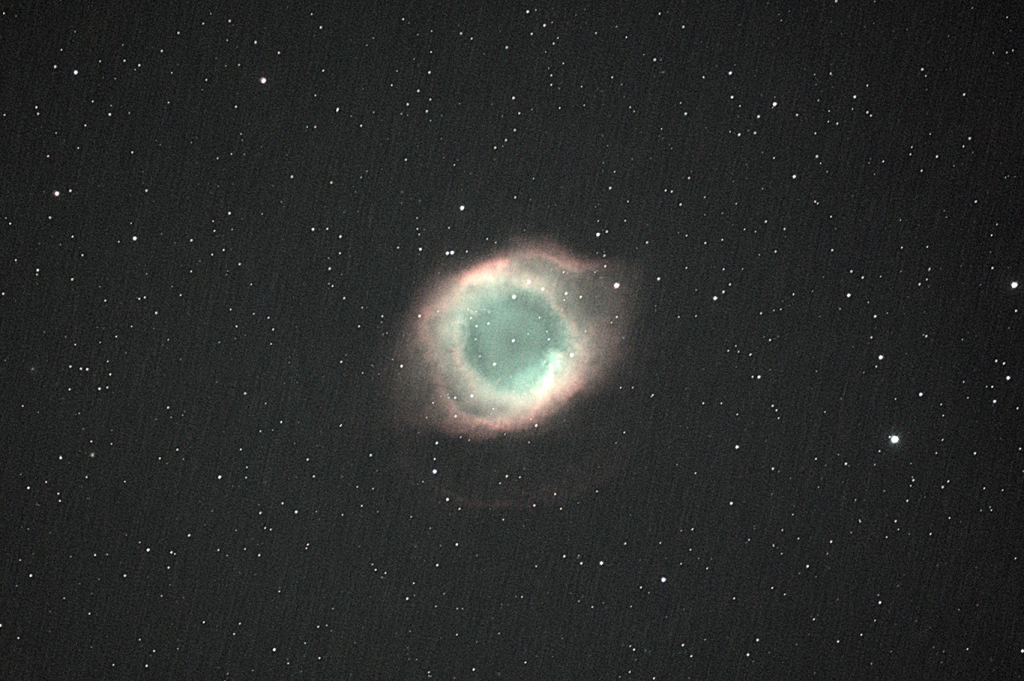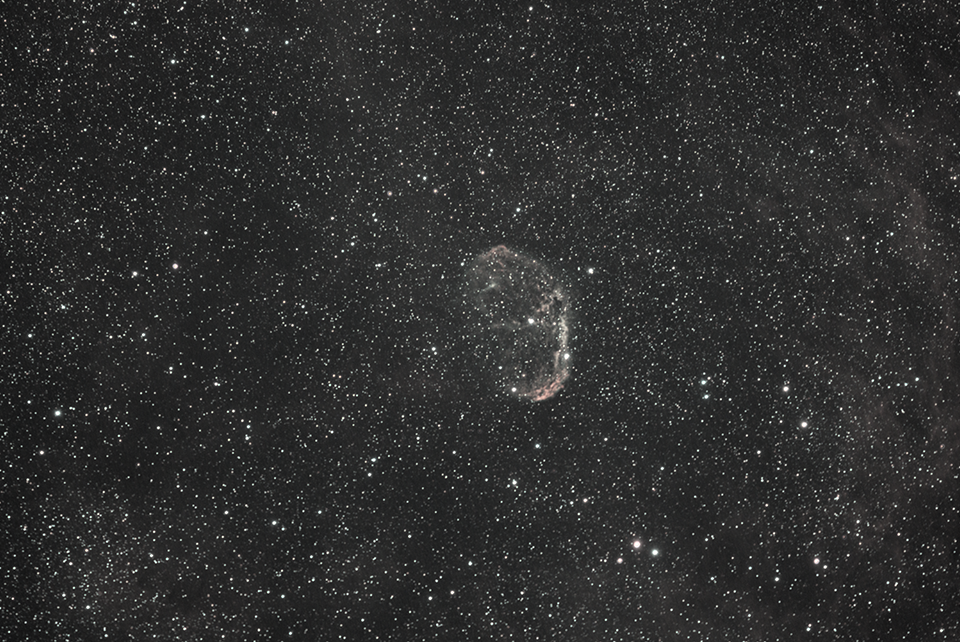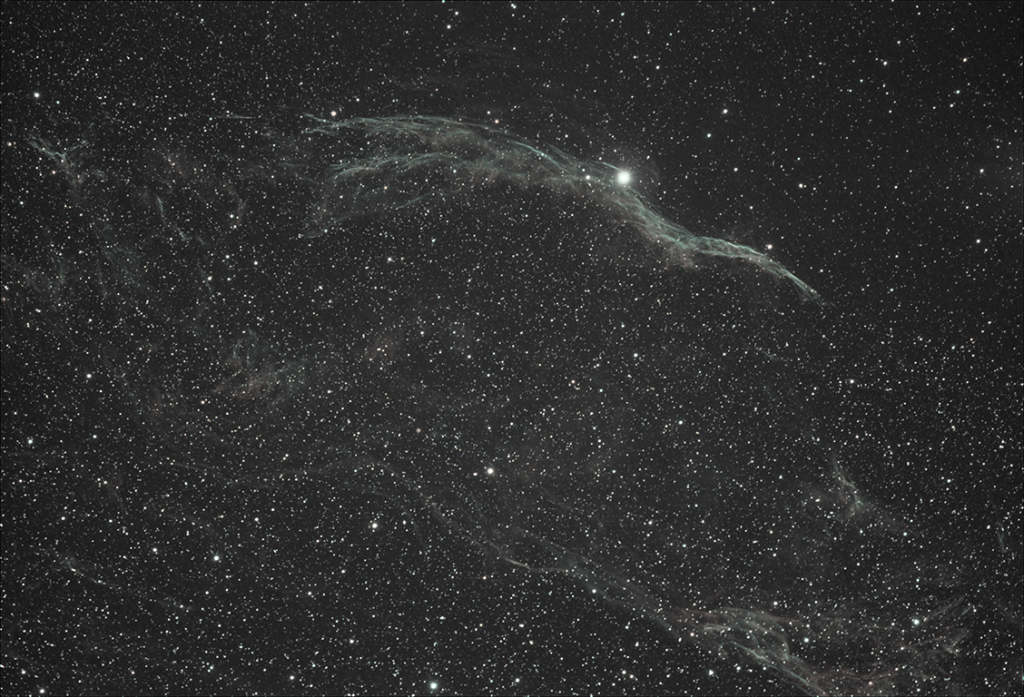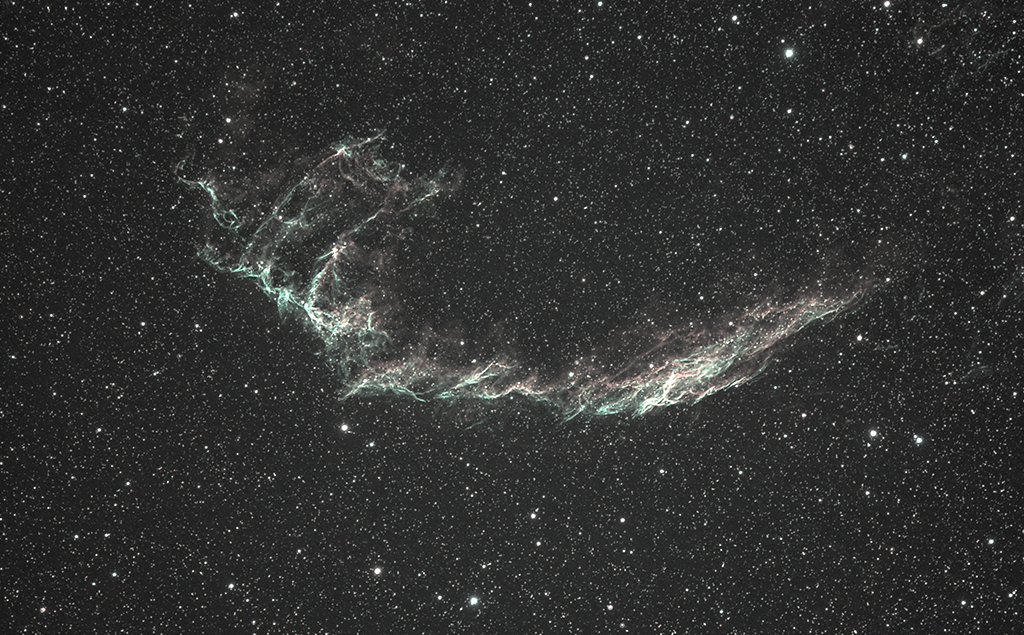This is the North American Nebula (aka NGC 7000) in the constellation of Cygnus. This was taken with a Canon EOS 800D and kit 75-300mm Zoom at f5.6. ISO was 3200 and this is a stack of about 40 60 second images stacked together. It’s right in the middle with the star Deneb (part of the Summer Triangle) to the right. I had the camera on a tracking mount. You can easily see “Mexico” and stubby “Florida” (I think sea level rise has claimed the southern end). This nebula is a so-called emission nebula where the cases are warmed by the embedded stars causing it to glow with a distinctive pinkish color.
